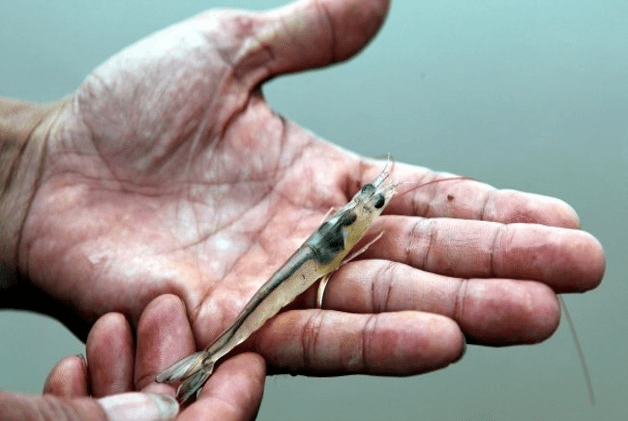Shrimp liver disease is a rather dangerous disease, which can cause mass death if there are no timely preventive measures, so how do you know how healthy the shrimp liver is? What are the signs of the disease as well as effective ways to prevent the disease? Please have a look at:
1. What does a healthy shrimp liver look like?
Normal color: golden brown, dark brown.
Liver fluid: When the liver is squeezed out, there is a thick yellow-brown fluid, not flowing.
Odor: light fishy, characteristic.
Membrane: viewed from the outside of the thyroid, a pale-yellow hepatobiliary membrane covers the lower half of the liver.
Shape: Wide, wide-up to the 2 edges of the gills, as long as the carapace, looking clearly and smoothly.
The rice grain-shaped stomach is clearly seen in black, dark brown color.

2.How does the liver of shrimp indicate that the shrimp has been infected?
There are usually 3 cases of liver disease as follows:
a. White leg shrimp suffering from liver atrophy.
Liver atrophy in white-leg shrimp, the liver of white-leg shrimp is atrophied, black and calloused or tough. The liver of white-leg shrimp is atrophied, the liver of white-leg is not broken, still intact, when rolling with the index finger and thumb, the shrimp liver is as tough as rubber.
Shrimps that have the atrophy liver, their intestines are empty when they are dead, the liver is black, still intact. Shrimp die dispersedly and not boisterously. The shrimp that are not infected are still eating normally. If the weather is good, shrimp health will be improved, white-leg shrimp may not have disease outbreaks and can be overcome with good care.

b. Whiteleg shrimps suffer from liver failure and yellow liver disease.
The liver of white-leg shrimp is pale yellow, mushy, and fragile. When separating the shrimp liver from the shrimp head, the liver will be broken, the fluid will flow out, and will no longer be monolithic.
If white-leg shrimp dies but the liver is mushy, endeavor to observe the water surface of the pond when feeding shrimps, if there is a sign of shrimp jumping vertically on the surface of the pond from 2 to 4 times above the pond water, then we should collect immediately, do not hesitate or procrastinate at all. Because that expression shows hepatopancreatic necrosis disease on white leg shrimp

c. White leg shrimp suffering from acute hepatopancreatic necrosis disease.
The cause of liver disease in white-leg shrimp was determined to be caused by highly virulent bacteria. The diseased white-leg shrimp has atrophied hepatopancreas, the hepatopancreas is pale to white, the shrimp’s intestines are empty or broken, the shrimp often have soft shells, the mortality rate is quite high. The only way to prevent it is to choose good and healthy varieties. Check the bacterial density of the pond water, in the soil and on the shrimp larvae to make sure that the density of Vibrio is always at a safe level.

3. In order to prevent liver disease on shrimp effectively, what issues should we pay attention to?
- Choose to buy good, healthy, disease-free varieties. We should use PCR to detect diseases before bringing in stock for breeding.
- Prepare the pond before stocking shrimp according to the correct procedure, applying biosecurity methods.
- Stocking shrimp with moderate density, should not be too dense
- Choose food with good quality and sufficient nutrients and adjust the amount of feed in accordance with each stage of shrimp growth to avoid excess, which can be a part of creating conditions for bacterial species to grow.
- Alkalinity should reach 100ppm and gradually increase to 150ppm at the end of the season. The pH should be at least 7.8 in the Mekong Delta and not less than 8.0 in the central regions.
- Maintain the required oxygen content in the pond.

 Tiếng Việt
Tiếng Việt Indonesia
Indonesia